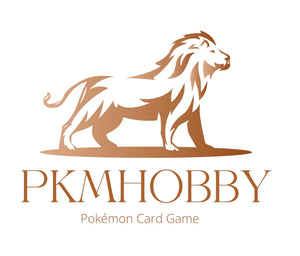Are you a Pokémon card collector who wants to ensure your cards stand out in the market? If so, you’ve likely heard of Tag Grading. This innovative grading service has been making waves in the trading card game (TCG) world for its cutting-edge technology and transparent grading process. But what exactly is it, and why should you consider it for your collection?
Let’s dive deep into the world of Pokemon Tag Grading Card and uncover why it’s becoming a top choice for serious collectors and investors alike.
What is Tag Grading?
Tag Grading is a modern card grading company that uses AI-powered technology to provide highly accurate, consistent, and transparent evaluations of trading cards, including Pokémon cards. Unlike traditional grading companies, which rely heavily on human judgment, Tag uses computer vision and machine learning to minimize human bias.
Founded with the vision of creating the most objective grading system, Tag has quickly gained popularity among collectors who value precision and innovation.
Benefits of Tag Grading Cards
So, why choose Tag over other grading services? Here are some standout benefits:
-
AI-driven accuracy: Eliminates subjectivity in grading.
-
Transparency: Detailed digital reports show exactly where your card lost points.
-
Boosted market value: Buyers trust consistent, data-backed grades.
-
Premium slabs: Sleek and durable cases that protect your card for the long term.
Tag Grading isn’t just about a number on a label—it’s about building trust in the value of your collection.
Tag Grading vs. PSA vs. CGC vs. BGS
When it comes to card grading, collectors often compare PSA, CGC, BGS, and now Tag.
| Feature | PSA | CGC | BGS | Tag Grading |
|---|---|---|---|---|
| Grading Scale | 1–10 | 1–10 | 1–10 | 1–10 (with subgrades) |
| Technology | Manual | Manual + Tools | Manual + Tools | AI-powered |
| Turnaround | Medium | Fast | Medium | Fast (AI efficiency) |
| Market Value | High | Growing | High for rare | Increasing |
| Transparency | Low | Medium | Medium | High (reports) |
Tag Grading stands out for its AI grading and full transparency, making it a game-changer for many collectors.
How the Tag Grading Process Works
Curious about how to submit your cards? Here’s the process:
-
Create an account on Tag Grading’s official website.
-
Prepare your cards by placing them in penny sleeves and semi-rigid holders.
-
Submit and ship your cards using their instructions.
-
AI analysis: Tag’s system scans your card in ultra-high resolution, analyzing centering, edges, corners, and surface.
-
Receive results: You’ll get a physical slab and a digital report accessible through a QR code.
Turnaround times vary but are generally faster than traditional graders.
Features of a Tag-Graded Card
A Tag-graded Pokémon card is not just a slab—it’s a piece of tech:
-
Clear label: Shows grade, subgrades, and certification number.
-
QR code: Links to a detailed digital grading report.
-
Premium slab design: Sleek, stackable, and highly durable.
These features enhance collector confidence and market appeal.
Why Collectors Love Tag Grading
Collectors are praising Tag Grading because:
-
The grading is consistent and data-backed.
-
Subgrades provide granular details about the card’s condition.
-
The slabs look modern and premium, perfect for display.
This mix of trustworthiness and aesthetic appeal makes Tag a favorite among tech-savvy collectors.
How to Maximize Your Card’s Value with Tag Grading
Want to get the best grades? Follow these tips:
-
Pre-grade: Inspect your card under good lighting.
-
Clean gently: Remove dust and fingerprints with care.
-
Handle carefully: Use gloves to avoid oils and damage.
-
Store properly: Keep cards in sleeves and top loaders before submission.
-
Choose wisely: Grade only cards that have potential to score high or increase in value.
A little preparation goes a long way in boosting your final grade.
Buying and Selling Tag-Graded Cards
Tag-graded cards are gaining traction on eBay, TCGPlayer, and other marketplaces. Because of their transparency and modern slabs, they’re increasingly attractive to buyers. Always verify the QR code to confirm authenticity.
Price trends show that high-grade Tag cards are beginning to rival PSA and CGC prices, especially for rare Pokémon cards.
Is Tag Grading the Future of Pokémon Card Collecting?
With its AI-driven process and digital transparency, Tag Grading is shaping the future of card grading. Many collectors believe that technology-based grading will eventually become the industry standard.
As the Pokémon TCG market continues to grow, Tag Grading offers innovation that aligns with the needs of modern collectors.
Conclusion
Tag Grading is more than just another grading company—it’s a revolution in how Pokémon cards are evaluated and presented. With its AI accuracy, detailed reports, and premium slabs, it’s no wonder collectors are embracing it. Whether you’re a casual fan or an investor, Tag Grading can elevate your collection’s value and trustworthiness.
FAQs
1. Is Tag Grading better than PSA?
Tag offers AI-driven transparency, but PSA still holds the strongest market recognition. Both have their pros.
2. How much does it cost to grade with Tag?
Pricing varies, but it’s competitive with other grading services, often around $20–$30 per card.
3. Can Tag-graded cards be crossed to PSA?
Yes, but PSA will regrade the card from scratch.
4. Where can I verify a Tag-graded Pokémon card?
You can scan the QR code on the slab to view the detailed digital report.
5. Does Tag grading increase card value?
Absolutely! High Tag grades often boost resale value thanks to transparent grading and premium slabs.





